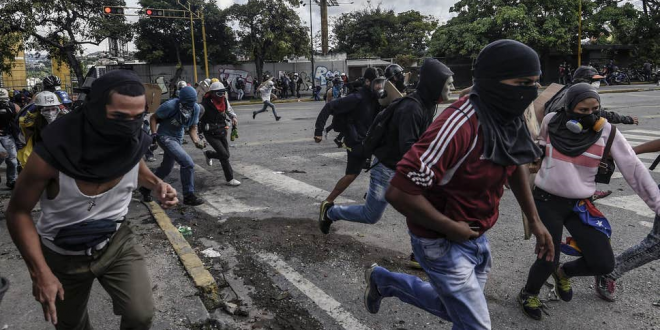Conflict over resource shortages could be averted by using ‘chaos map’, say authors Conflict over resource shortages could be averted by using ‘chaos map’, say authors
The authors of a “chaos map” which charts deaths linked to violent unrest arising from food, water or fuel insecurity have suggested that the number of fatalities is likely to increase in the coming years.
Researchers plotted more than 1,300 deaths between 2005 and 2017 on an interactive map of the world.
It displays what “unrest” was present within a territory in a given year across six categories: conflict, demonstrations, looting, protest, riot and suicide.
They also displayed the number of deaths by the resource insecurity to which they were directly attributable – food, water or fuel.
Dr Davide Natalini and Professor Aled Jones, of Anglia Ruskin University, scanned reports covering food, water, and fuel insecurity shocks published since 2005 to plot the data.
They say their map can help people to understand the escalating instability and chaos that can occur when pressures caused by limited resources are compounded by factors such as climate change and rising populations.
They say this could prove useful for governments and non-governmental organisations.
Professor Jones, director of the Global Sustainability Institute at Anglia Ruskin, said: “As climate change increases the severity of extreme weather over the coming years and we see continuing political instability in key oil-producing regions, there is likely to be an increased frequency and severity of physical shocks to our food, fuel and water supplies.
“Without proper strategies to combat these shocks, it is likely that reactive policies from governments will only make the impacts of these shocks worse, leading to bigger chaos events and more deaths.
“In Europe, while we have already seen a limited number of deaths, without a full and transparent conversation between governments and its citizens around the need to move away from fossil fuels and more investment into resilient food and water systems, it is likely that we will not be immune to these events. It is difficult to pinpoint exactly what causes protests about rising fuel or food costs to turn violent, and this is where the risks lie.
“We hope the chaos map can build our understanding of these tipping points in society so we can hopefully avoid the worst impacts in the future.”
The Independent
 Lebanese Ministry of Information
Lebanese Ministry of Information



